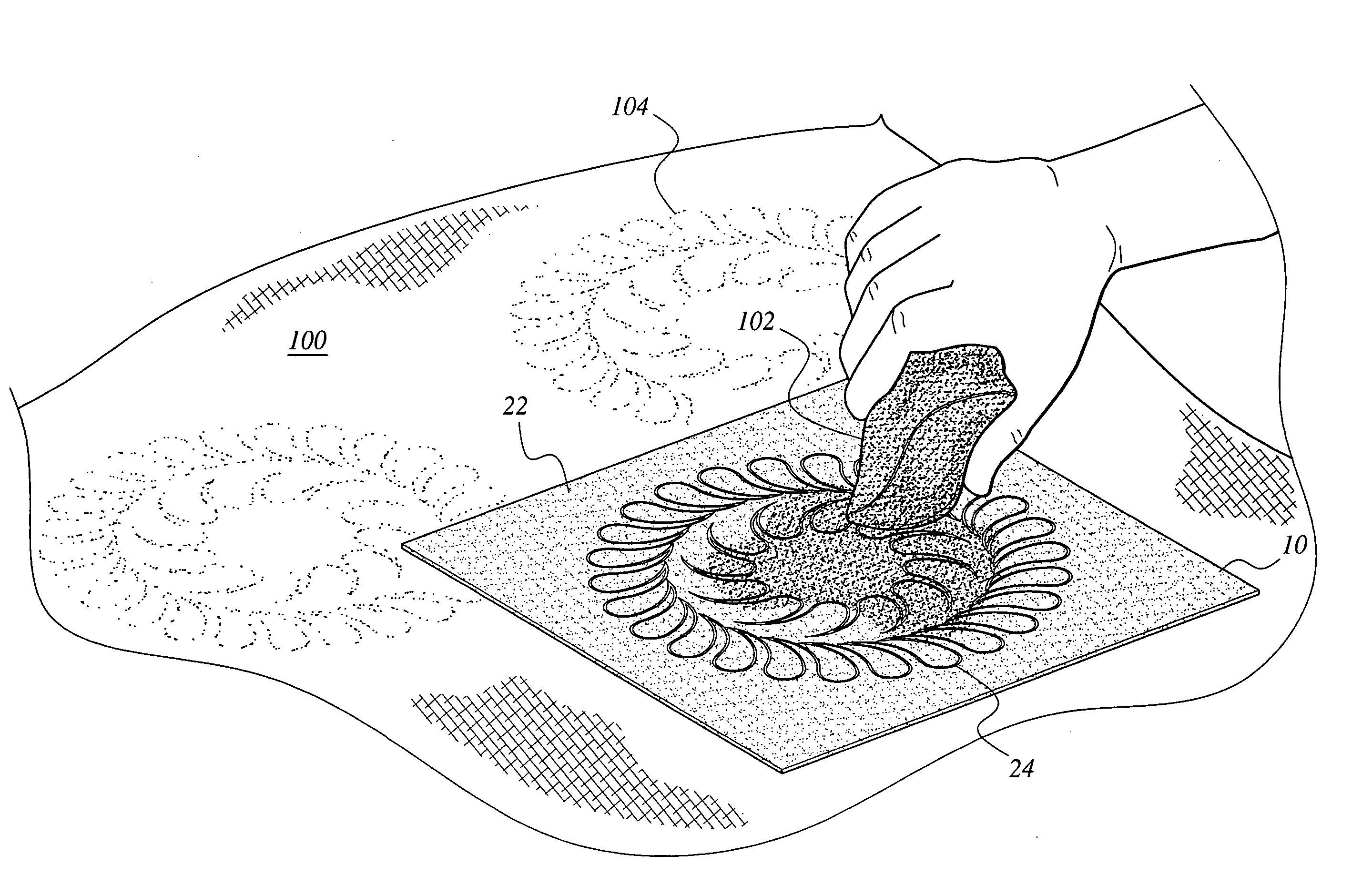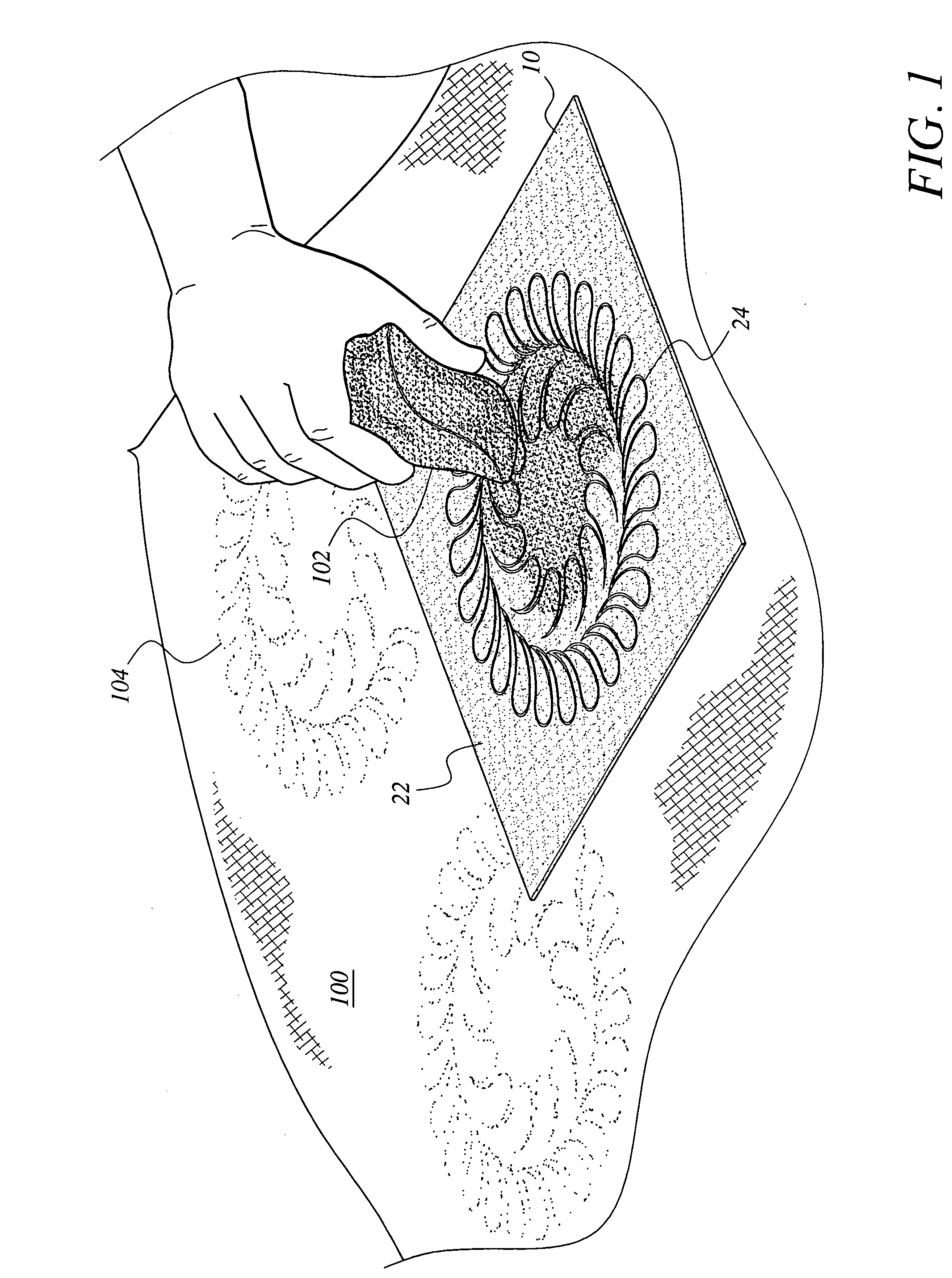Craft stencil
a stencil and craft technology, applied in the field of stencils, can solve the problems of not being suitable for use as a marking template, not being able to produce a significant quantity of pounce patterns, and being tedious in the production of the pounce pattern itself, so as to achieve the effect of convenient use, simple and fas
- Summary
- Abstract
- Description
- Claims
- Application Information
AI Technical Summary
Benefits of technology
Problems solved by technology
Method used
Image
Examples
Embodiment Construction
[0029] The present invention is a craft stencil, designated generally as 10 in the drawings, and a method for making and using the craft stencil 10. Referring to FIG. 1, the craft stencil 10 is shown in use while marking a temporary pattern 104 on a surface 100 of a workpiece. The craft stencil 10 is placed on the workpiece surface 100, while a marking powder such as chalk or a pounce powder is applied by a marking powder applicator 102 such as a chalk bag or a pounce pad. The marking powder contacts the workpiece surface 100 through open areas 24 of the craft stencil 10, marking a pattern 104 on the workpiece surface 100.
[0030] Turning to FIG. 2, the craft stencil 10 comprises a sheet of open mesh material 20. Areas of the open mesh material 20 are covered with a photosensitive emulsion 22 that closes the mesh. Between the areas of the open mesh material 20 covered by the photosensitive emulsion 22 are open areas 24, where the mesh is left open. The open areas 24 define the craft ...
PUM
 Login to View More
Login to View More Abstract
Description
Claims
Application Information
 Login to View More
Login to View More - R&D
- Intellectual Property
- Life Sciences
- Materials
- Tech Scout
- Unparalleled Data Quality
- Higher Quality Content
- 60% Fewer Hallucinations
Browse by: Latest US Patents, China's latest patents, Technical Efficacy Thesaurus, Application Domain, Technology Topic, Popular Technical Reports.
© 2025 PatSnap. All rights reserved.Legal|Privacy policy|Modern Slavery Act Transparency Statement|Sitemap|About US| Contact US: help@patsnap.com



